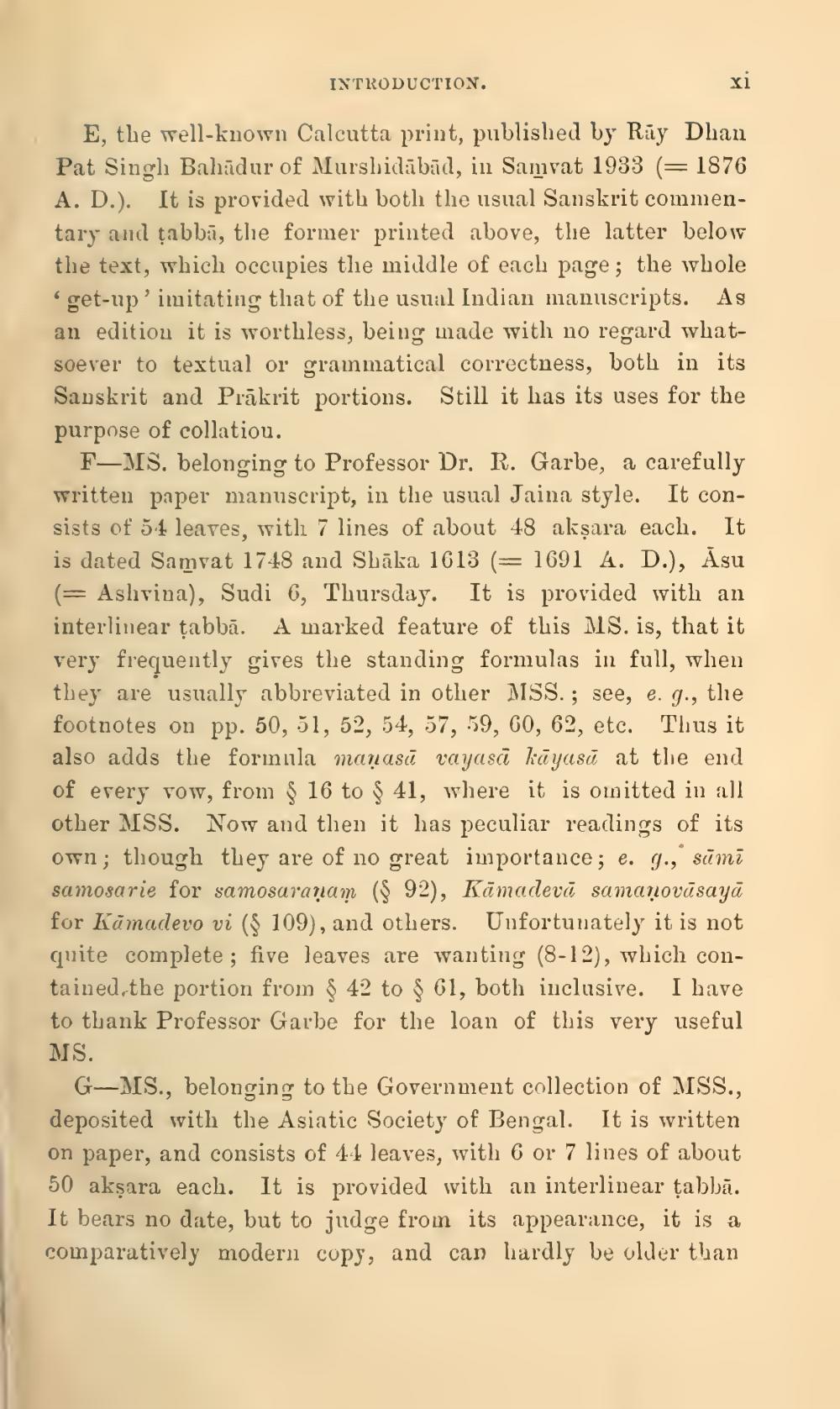________________
INTRODUCTION.
E, the well-known Calcutta print, published by Ray Dhan Pat Singh Bahadur of Murshidābād, in Samvat 1933 = 1876 A. D.). It is provided with both the usual Sanskrit commentary and tabbā, the former printed above, the latter below the text, which occupies the middle of each page; the whole
get-up'imitating that of the usual Indian manuscripts. As an edition it is worthless, being made with no regard whatsoever to textual or grammatical correctness, both in its Sanskrit and Prākrit portions. Still it has its uses for the purpose of collatiou.
F-MS. belonging to Professor Dr. R. Garbe, a carefully written paper manuscript, in the usual Jaina style. It consists of 54 leaves, with 7 lines of about 48 aksara each. It is dated Samvat 1748 and Sbāka 1613 (= 1691 A. D.), Asu (= Ashvina), Sudi 6, Thursday. It is provided with an interlinear tabbā. A marked feature of this MS. is, that it very frequently gives the standing formulas in full, when they are usually abbreviated in other MSS. ; see, e.g., the footnotes on pp. 50, 51, 52, 54, 57, 59, 60, 62, etc. Thus it also adds the formula mañasi vayasā kāyasū at the end of erery vow, from $ 16 to $ 41, where it is omitted in all other NSS. Now and then it has peculiar readings of its own; though they are of no great importance; e. g., sūmi samosarie for samosaraṇam ($ 92), Kāmadevă samanovāsayā for Kāmadevo vi ($ 109), and others. Unfortunately it is not quite complete; five leaves are wanting (8-12), which contained the portion from $ 42 to $ 61, both inclusive. I have to thank Professor Garbe for the loan of this very useful MS.
G-MS., belonging to the Government collection of MSS., deposited with the Asiatic Society of Bengal. It is written on paper, and consists of 44 leaves, with 6 or 7 lines of about 50 akşara each. It is provided with an interlinear tabbā. It bears no date, but to judge from its appearance, it is a comparatively modern copy, and can hardly be older than




